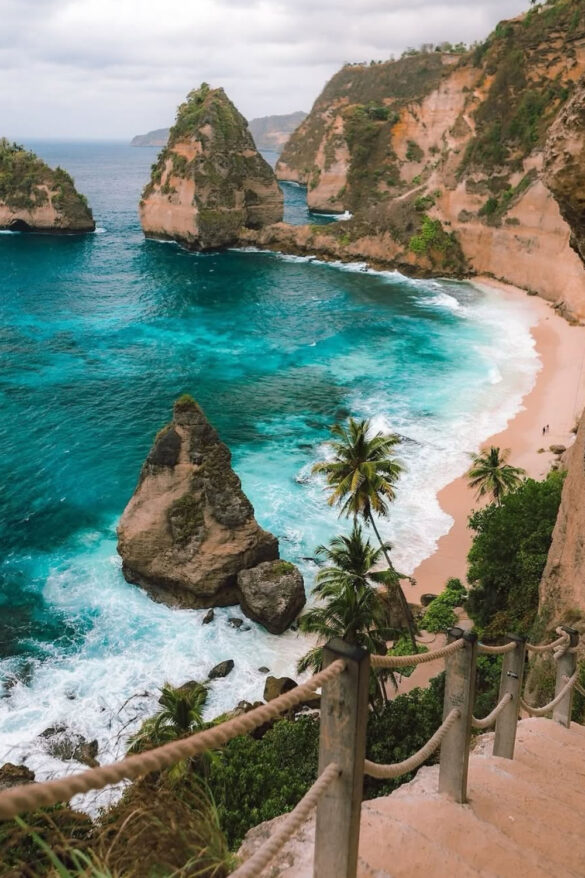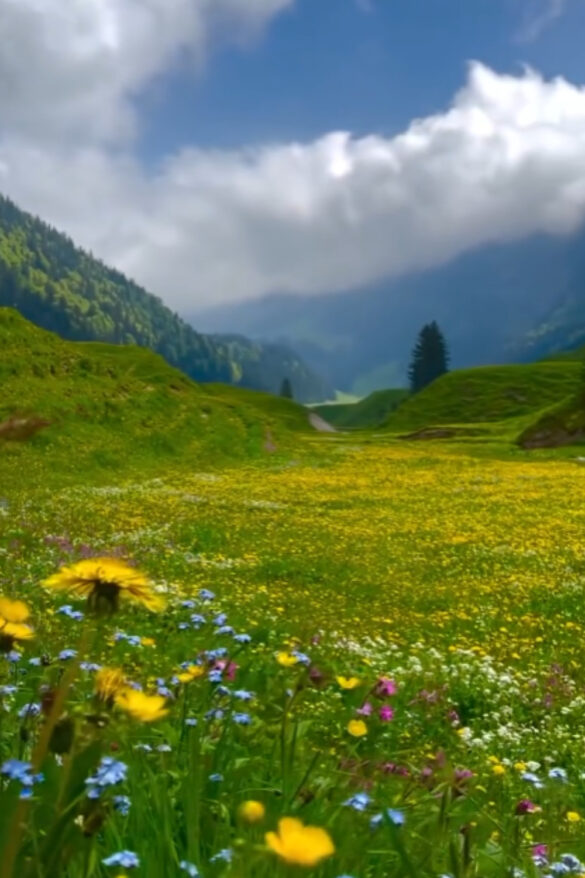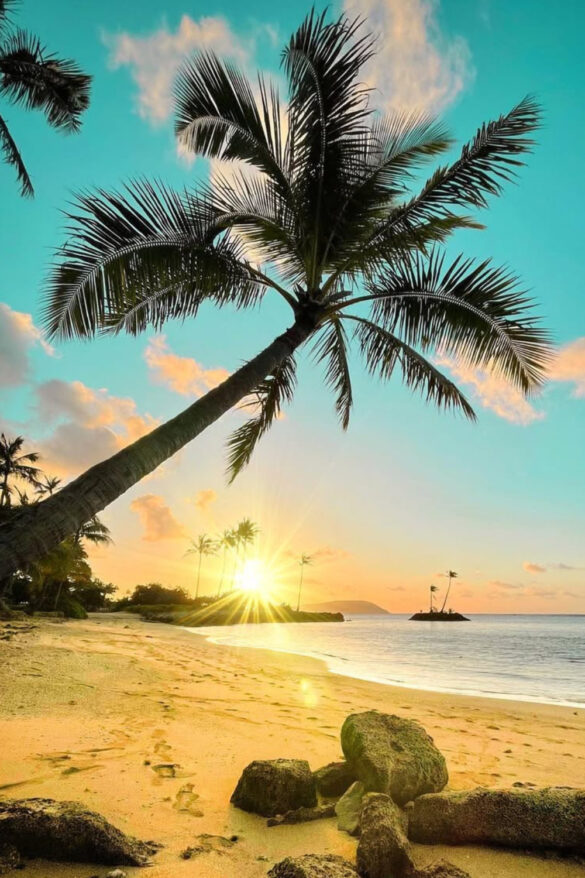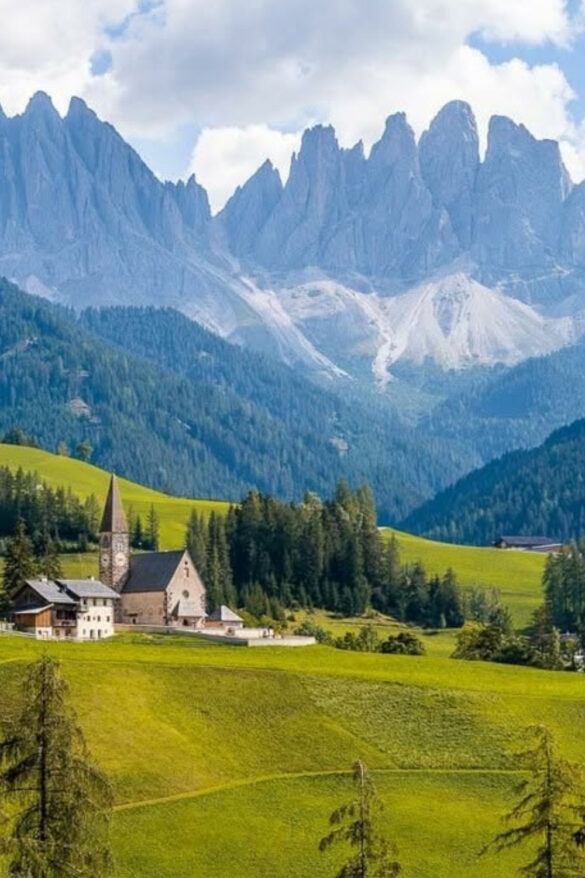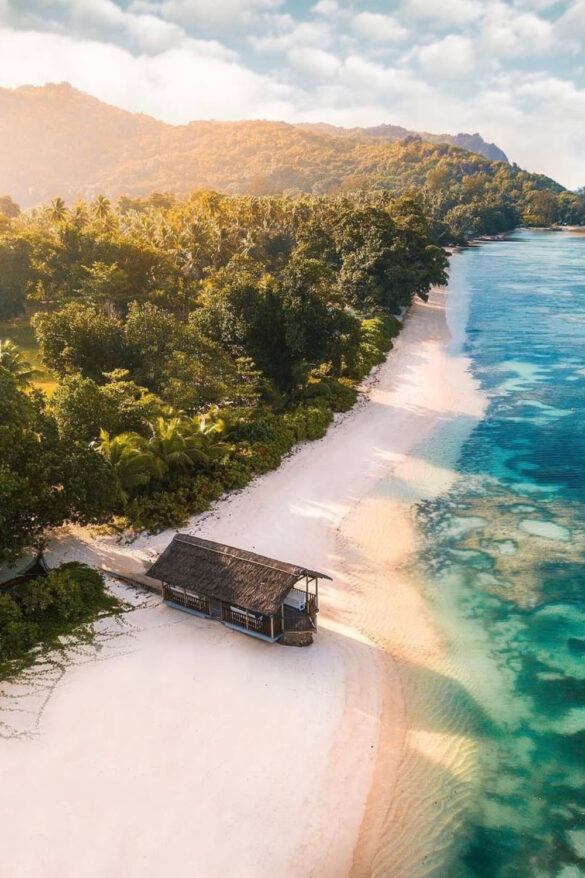Introduction to African Safaris: Discovering the Wild Side
Africa is a continent of unequivocal natural beauty and a rich ecosystem that provides an experience unavailable anywhere: the safari. The very name of safari is associated with the images of large plains, beautiful beasts, and adventure. However, an African safari is much more than a tour; it is a journey into the midst of the wilderness, an opportunity to see the power and delicate balance of nature at close quarters. Those who want to explore the wilderness will find no better place. This guide will help you to find your way easily in the jungle of options and have a wonderful safari adventure.
What is so appealing about an African safari is that it brings us in touch with something wild and fearful. Wake up and hear the roar of a lion miles away, see a herd of elephants slowly pass the savanna, or see a cheetah running so fast in his pursuit. These are not the scenes in a documentary; these are the real moments that are going to take place in front of your eyes. The continent is made up of an amazing diversity of national parks and reserves each with its own charm and flora and fauna, and every safari is a different experience.
There are thousands of species of animals, including great giraffes and zebras, colorful birds, and nocturnal elusive animals, in Africa, in addition to the most well-known ones known as the Big Five (lion, leopard, elephant, rhino, and buffalo). The biodiversity alone is astounding, and conservation within the continent is committed to protecting these valuable ecosystems to be enjoyed in the next generation. When you begin an African safari, you are no longer a tourist; you are part of an enormous natural drama and your visit will regularly play a direct role in these essential conservation programs with both the charges of the park and further community tourism projects. Learning what sorts of safaris there are, when to go, and how to get ready can make your adventure much more meaningful and you can really see the wild side of this amazing continent.

Choosing Your African Safari Destination: Where to Discover the Wild Side
Selecting the right destination is the cornerstone of planning your unforgettable safari guide to Africa. The continent offers a spectrum of experiences, from the iconic plains of East Africa to the diverse landscapes of Southern Africa. Each region boasts unique characteristics, wildlife concentrations, and cultural encounters. To truly discover the wild side, it’s essential to consider what kind of adventure you’re seeking.
East Africa: The Classic Safari Experience
East Africa, encompassing countries like Kenya and Tanzania, is often considered the birthplace of the safari. It’s famous for its vast savannas, dramatic landscapes, and the incredible Great Migration.
- Kenya: Home to the Maasai Mara National Reserve, Kenya offers a classic safari experience. The Maasai Mara is world-renowned for its high concentration of wildlife, particularly during the Great Migration (July to October) when millions of wildebeest and zebras cross the Mara River, braving crocodiles and predators.
- Highlights:
- Maasai Mara National Reserve: Witness the Great Migration, abundant big cats, and the Maasai culture.
- Amboseli National Park: Famous for its large herds of elephants with Mount Kilimanjaro as a stunning backdrop.
- Samburu National Reserve: Known for its unique “Special Five” (Grevy’s zebra, reticulated giraffe, Beisa oryx, Somali ostrich, and gerenuk).
- Best Time to Visit: Dry seasons (June to October and December to March) for optimal wildlife viewing.
- Fun Fact: The Maasai Mara is part of the larger Mara-Serengeti ecosystem, which supports one of the highest densities of wildlife in the world.
- Highlights:
- Tanzania: Tanzania offers an equally breathtaking experience, dominated by the Serengeti National Park and the Ngorongoro Crater.
- Highlights:
- Serengeti National Park: The other half of the Great Migration, offering vast plains and incredible predator-prey interactions. The name “Serengeti” comes from the Maasai word siringet, meaning “endless plains.”
- Ngorongoro Conservation Area: A UNESCO World Heritage Site, this collapsed volcanic caldera is a natural wonder, housing an astonishing density of wildlife, including the endangered black rhino, within its confined walls.
- Tarangire National Park: Famous for its large elephant herds and baobab trees.
- Best Time to Visit: Dry seasons (June to October and December to March) for optimal wildlife viewing, with the Great Migration taking place across different parts of the Serengeti throughout the year.
- Highlights:
Case Study: The Great Migration The Great Migration is a phenomenon that draws visitors globally. This annual movement of over 1.5 million wildebeest, 200,000 zebras, and countless gazelles across the Serengeti and Maasai Mara, driven by the search for fresh grazing, is one of the greatest wildlife spectacles on Earth. It’s a prime example of nature’s relentless cycle of life and death, offering unparalleled opportunities to witness dramatic river crossings and predator action.
Southern Africa: Diversity and Luxury
Southern Africa, including Botswana, South Africa, and Zambia, provides a different flavor of safari, often characterized by more diverse landscapes, luxurious accommodations, and unique water-based safaris. This region also offers excellent opportunities to discover the wild side.
- Botswana: Renowned for its commitment to high-value, low-impact tourism, Botswana offers exclusive and pristine wilderness experiences.
- Highlights:
- Okavango Delta: A UNESCO World Heritage Site, this inland delta is a unique wetland ecosystem where water-based safaris (mokoro rides) offer intimate wildlife encounters. It’s a birdwatcher’s paradise and home to diverse mammal species.
- Chobe National Park: Famous for its enormous elephant population (estimated to be over 120,000) and river safaris.
- Moremi Game Reserve: Considered one of the most beautiful reserves in Africa, with a mix of wetlands and dry land, supporting an incredible array of wildlife.
- Best Time to Visit: Dry season (May to October) when wildlife congregates around water sources.
- Quote: As Sir David Attenborough once said, “The Okavango is one of the most remarkable natural habitats on earth.”
- Highlights:
- South Africa: Offers a blend of world-class wildlife viewing and diverse cultural experiences, often combined with urban exploration or coastal holidays.
- Highlights:
- Kruger National Park: One of Africa’s largest and most famous game reserves, offering excellent Big Five sightings, diverse ecosystems, and well-developed infrastructure.
- Sabi Sands Game Reserve: Adjacent to Kruger, this private reserve is renowned for its exceptional leopard sightings and luxurious lodges.
- Addo Elephant National Park: Focuses on elephant conservation but also hosts the Big Seven (including great white sharks and southern right whales off the coast).
- Best Time to Visit: Dry season (May to October) for optimal wildlife viewing.
- Data Point: Kruger National Park spans approximately 19,485 square kilometers, making it roughly the size of Israel.
- Highlights:
- Zambia: Known for its walking safaris and authentic wilderness experiences, particularly in the South Luangwa National Park.
- Highlights:
- South Luangwa National Park: Considered the home of the walking safari, offering an intimate way to experience the bush with expert guides. Famous for its leopard sightings.
- Lower Zambezi National Park: Offers a combination of game drives, walking safaris, and canoe safaris on the Zambezi River.
- Best Time to Visit: Dry season (May to October) for prime walking safari conditions and wildlife concentrations.
- Highlights:
Other Notable Destinations for an Unforgettable Safari Guide to Africa
While East and Southern Africa are the most popular, other regions offer unique safari experiences for those looking to discover the wild side in less trodden paths.
- Namibia: Famous for its desert-adapted wildlife, stunning desert landscapes, and the Skeleton Coast. Etosha National Park, with its massive salt pan, is a major draw.
- Zimbabwe: Offers excellent safari experiences in Hwange National Park and Mana Pools National Park, known for its walking safaris and canoe trips on the Zambezi.
- Uganda & Rwanda: Primarily known for gorilla trekking in their dense montane forests, offering an incredibly intimate and moving encounter with these endangered primates.
Choosing your destination ultimately depends on your priorities: whether it’s witnessing the Great Migration, experiencing water safaris, seeking exclusive luxury, or embarking on an adventurous walking safari. Researching the specific wildlife, landscape, and type of activities offered in each region will help you tailor your unforgettable safari guide to Africa.
Types of African Safaris: Tailoring Your Unforgettable Safari Guide to Africa
After picking up the destination, the next thing that you need to do when planning on your unforgettable trip to Africa as a safari guide is to pick the kind of safari that best fits your interests and level of adventure. The diversity of an African safari is the most beautiful as it has various experiences to suit the various preferences of individuals who want to explore the wildest part of nature.
1. Game Drive Safaris: Classic style of visiting the Wild.
It is the typical and most popular type of safari and includes tours in 4×4 vehicles specially crafted to be used in wildlife viewing. Game drives will enable you to travel long distances and in the process have a great chance of meeting as many animals as possible in their natural habitat.
- Open-sided Vehicles: The vast majority of safari lodges have open-sided vehicles, which offer a clear view and excellent photo opportunities.
- Experienced Guides: Expert Guides (often referred to as rangers or naturalists) are very important. They have amazing knowledge of the local ecosystem, animal behavior, and locating animals, and will greatly increase your chances of seeing wildlife and learning the area.
- Morning and Afternoon Drives: Game drives usually take place in the early morning and in the late afternoon/evening when the animals are the most active and the light is also favorable to take pictures.
- Night Drives: Night Drives are available with some private concessions, whereby they use spotlights to locate nocturnal animals such as civets, genets, bushbabies, or even leopards on the hunt.
• Advantages:
- Any age and fitness level.
- Comfort: Provides a fairly comfortable means of traveling large distances.
- Safety: Gives a safe space between wildlife and potentially dangerous wildlife.
- Coverage: The distance covered can be large and this increases the chances of making different sightings.
- Considerations: Sometimes not as immersive as other types of safaris because they are in a vehicle.
Fact: Numerous safari guides do receive extensive training and certification which can take years, including animal tracking, bird identification, botany and geology.
2. Walking Safaris: Walking on the Wild Side.
Walking safaris are the ultimate experience of those who want to touch the bush at a more sensory level. These safaris were pioneered in the South Luangwa National Park of Zambia and entail a walk through the wilderness with armed guides.
Sensory Immersion: This is all about using all of your senses: smell of the dust, birdsong, leaves rustling, and the earth under your feet.
- Take Notice of the Little Things: Although you may still see large animals (at safe distance), you will be more focused on smaller details that you can easily overlook when in a vehicle: insects, tracking animal tracks, plant identification, and the detailed ecosystem.
- Guided by the Experts: These are guided walks by very highly trained and armed professional walking guides, who focus on guest safety as they teach guests about the flora, fauna and geology of the region.
- Duration: May be as short as morning walks a few hours long, or as long as walking tours with fly-camping.
• Advantages:
- Intimacy: Gives an in depth connection with nature.
- Educational: Gives a specific environmental education about the ecosystem.
- Adventure: More stimulating and energetic means of exploring the bush.
• Contraindications: Will most likely need a moderate degree of physical fitness and be unsafe among very young children and in individuals with mobility problems. Priority will be given to safety and guides will never be anywhere near dangerous game.
Quation: In walking, you come into the world of the animal, on his terms. It is an eye opening and most certainly a life changing experience. – Norma Carr the legendary safari guide who is considered to be the father of walking safari.
3. Water based safari: Wet Side Wilderness.
Water-based safaris provide a new view of wildlife and birds in areas that have substantial waterways, like the Okavango Delta in Botswana or the Lower Zambezi in Zambia.
- Mokoro Safaris (Okavango Delta): Cruise silently through the channels of the delta in a traditional dugout canoe (mokoro) that is poled by a skilled guide. This provides very intimate and pristine views of aquatic life, birds and even of elephants or red lechwe wading in the water.
- Serenity: The calmness of the environment makes the experience of sightseeing very peaceful.
- Views: Provides an exclusive water level perspective of the wildlife.
• Boat Safaris (Chobe, Lower Zambezi): On larger rivers such as the Chobe or the Zambezi, larger motorized boats are used, offering ample room to witness large groups of elephants coming to drink, hippos, crocodiles and a great variety of water birds. Sundowner is especially popular.
• Canoe Safaris (Lower Zambezi): Guide canoe safaris on the Zambezi River are a thrilling adventure and the best way to see wildlife, usually quietly drifting into the river to approach elephants, hippos and buffalo.
• Advantages:
- Special view: Reaches places which cannot be approached by vehicles.
- Birdwatching: Birdwatching is extraordinary among the bird lovers.
- Cooling: An option where relative temperatures are higher.
- May be seasonal: Investigates water levels. Certain activities such as canoe safaris involve some degree of adventure and following safety briefs.
4. Other Special Safari Experience.
In addition to the major ones, a memorable safari guide to Africa may incorporate more specific activities:
• Hot Air Balloon Safaris: Rise silently over the Serengeti or Maasai Mara plains in the morning and watch the big scenes and wildlife on a spectacular fly-by view. This provides an amazing lookout point, particularly when there is the Great Migration.
- Experience: A champagne breakfast in the bush is often the ending to experience.
- Price: luxury value-added experience.
• Horseback Safaris: Experienced riders will find this type of safari, where you get to ride among the wildlife without the disturbance of a car, to be an incredibly immersive and thrilling adventure, especially in small reserves.
• Quad Bike Safaris: These are offered in some places, and are an adventurous way to see a variety of scenery, but they do not always involve big game, and may also involve cultural attractions.
• Gorilla and Chimpanzee Trekking: This is a highly-regulated and specialized activity in both Uganda and Rwanda, whereby visitors can spend one golden hour in the presence of habituated mountain gorillas or chimpanzees by hiking through dense forest areas. This is a very touching and memorable wild animal sight.
- Permits: expensive, limited permits required, have to be booked ahead of time.
- Physicality: This can be physical as there might be difficult terrain.
- Conservation: The money you pay as permit fees goes directly to conservation activities.
With this knowledge of these different types of safaris, you can customize your itinerary to suit your interests, fitness, and preferred degree of immersion to have a personally tailored and memorable safari guide to Africa as you explore the wild-side.

Best Time to Go on Safari: Planning Your Unforgettable Safari Guide to Africa
Timing is a critical factor in planning your unforgettable safari guide to Africa. The continent’s diverse climates and ecosystems mean that the “best” time to visit varies by region and even by the specific type of experience you’re seeking. To truly discover the wild side, it’s important to understand the seasonal changes and their impact on wildlife behavior and viewing conditions.
The Dry Season (Generally May – October)
This is widely considered the peak season for safaris across most of East and Southern Africa, offering optimal wildlife viewing conditions.
- Wildlife Concentration: As water sources dwindle, animals are forced to congregate around permanent rivers, lakes, and watering holes. This makes them easier to find and observe, often leading to dramatic scenes of predator and prey interactions.
- Vegetation: The bush thins out and grass is shorter, improving visibility and making it easier to spot animals, especially the elusive big cats.
- Comfort: The weather is typically cool and dry, with minimal rain, making for pleasant game drives and outdoor activities. Nights can be cold, so packing layers is essential.
- Downsides: This is the most popular time to travel, meaning more tourists, higher prices for flights and lodges, and a need to book well in advance. Key events like the Great Migration river crossings (July to October) attract large crowds.
Table: Dry Season Safari Advantages
| Advantage | East Africa (Kenya/Tanzania) | Southern Africa (Botswana/South Africa) |
| Wildlife Viewing | Excellent, particularly for the Great Migration | Excellent, animals gather at water sources |
| Vegetation | Short grass, clear visibility | Sparse bush, easy to spot animals |
| Weather | Cool, dry, sunny | Mild days, cold nights, low humidity |
| Activities | Ideal for game drives, hot air ballooning | Perfect for walking safaris, game drives, boat safaris |
| Price/Crowds | Peak season, high prices, crowded | Peak season, high prices, lodges often fully booked |
The Green Season (Generally November – April)
The green season is also known as the low or shoulder season, and it provides life-giving rains and an entirely new safari experience. This can be a great option to those who want to explore the wild side on a more personal level.
- Lush Landscapes: During the rainy seasons, the dry and dusty plains are changed into full-time green scenery. The landscape is breathtaking and is full of wildflowers and greenery.
- New Life: This is the month when most animals have babies and new babies and playful young animals are seen everywhere. It is a time of plenty and of new life.
- Birdwatching: The green season is paradise to a birdwatcher. Migratory birds come into Europe and Asia and the indigenous birds are in breeding colors and this makes a tremendous sightseeing and wonderful photo-taking.
- Photography: The soft natural light and the dramatic skies (which often feature thunderstorms in the background) are a photographers dream.
- Negatives: Rain may sometimes make the road hard to drive and may interfere with game drive time. It may be difficult to see some of the animals due to the long grass. The humidity and heat may be increased too.
- Pricing: cheaper lodges, cheaper packages, cheaper flights. This makes it cheaper. The number of tourists is reduced, which results in a more exclusive experience.
From: Seasonal Safari Experience.
- X-Axis: Months (Jan to Dec)
- Y-Axis 1: Tourist Numbers and Price (Low to High)- a blue bar is used to demonstrate this axis.
- Y-Axis 2. Wildlife Density: Waterholes and Visibility (Low-High) – A green bar will represent it.
• Key:
- Blue Bar (Tourist Numbers/Price): Rises in the Peaks between June and October, decline during the Green Season.
- Green Bar (Wildlife Density/Visibility): peaks in the months of June to October, declines during the Green Season.
- Text Annotations:
June-Oct: “Dry Season: Wildlife Viewing at its best, high prices.
Nov-May: “Green Season: Best to watch birds, Reduced prices”
What the Region Reveals: a Trace nearer.
- East Africa (Kenya and Tanzania): The peak season is mostly led by the Great Migration. The months of July to October are dry and the best months to see the river crossings. Nevertheless, in the Serengeti, green season (November-May) is the best time to see predators because the local animals remain with their offspring.
- Southern Africa (Botswana, South Africa): The dry season is good (May to October). The Okavango Delta floods in Botswana between around May and September and this provides incredible water-based safari experiences when the wildlife is most concentrated.
- Gorilla Trekking (Uganda and Rwanda): Treks can be held throughout the year, but the dry seasons (June-August and December-February) are usually recommended as the trails are not as muddy, and it is much easier to walk through forest. Nevertheless, it is always possible to get rainfall in these rainforest environments.
Lastly, but definitely, as much as we can say that the dry season is the standard choice when we call to mind an unforgettable safari guide to Africa due to its predictable nature of what will be seen and the weather is favorable, the green season shall be a beautiful experience, more intimate and will be more affordable. However, it all depends upon what you consider the best: better game viewing at a higher price, or rich scenery, new life, and a more exclusive experience at a lower price.
Practical Tips for Your African Safari: An Unforgettable Safari Guide to Africa
It takes detail to plan an unforgettable safari guide to Africa. In addition to deciding what you want to see and what kind of safari you want, there are numerous practical aspects that can either make or break your trip. These hints can help you to have an easy, comfortable and, indeed, rewarding experience as you explore the wild side.
1. What to Pack: Wild side Dressing.
Proper packing is also important when on an African safari to achieve comfort and safety. The trick is to bring light, airy and multipurpose clothes.
Colors Use neutral colors such as khaki, olive green, beige, and brown. Bright colors (particularly blue and black which tsetse flies favor) and camouflage patterns should be avoided (in most African countries these are only used by military men and women).
Layers: Temperatures vary widely between game drives in the early morning and in the heat of the day. layer of pack, and a jacket or fleece to wear on the evenings and mornings.
• Clothing Items:
- Long-sleeved trousers and shirts: Keep the sun, insects, and coarse bush off of you.
- T-shirts: For daytime wear.
- Comfortable walking shoes: You will need these comfortable walking shoes either when you are taking the safari by foot or when you are simply walking in and out of the lodge.
- Hat: A wide-brimmed hat is a necessity when it comes to sun protection.
- Rain jacket: A light but packable rain jacket is a nice thought even during the dry season.
• Essential Gear:
- Binoculars: Binoculars (ideally 8×42 or 10×42) are, perhaps, the most useful item. It will enable you to view animals closely at a long distance.
- Camera: A good zoom lens (e.g., 70-300mm or more) is a good way to bring an amazing wildlife shot home. Forget about additional batteries and flash drives.
- Insect Repellent: An insect repellent containing a lot of DEET is essential, especially in the green season or in places where insects are prevalent.
- Sunscreen and Sunglasses: Do not expose your skin and eyes to the high intensity equatorial sun.
- Power bank/Adapter: Charity charging points usually exist in lodges, but a power bank will be helpful when charging gadgets simultaneously. There should also be an international adapter.
Fact: Laundry is available at many safari lodges meaning you do not have to bring with you a new outfit each day. This can keep the weight of luggage to a minimum, particularly when flying small bush planes between camps.
2. Health and Safety: How to be Healthy on Your Safari.
Health is something that you have to put on the list of things to see on your trip to Africa.
- Vaccinations: A few months before traveling, you should seek advice with your doctor or a travel clinic regarding any vaccinations required and recommended depending on your destination, including Tetanus, Hepatitis A, and Typhoid.
- Malaria Prevention: A lot of safari destinations are located in malaria areas. Discuss anti-malarial drug with your doctor and take a prophylaxis. Apply insect repellent, long sleeves and trousers in the evening and sleep in mosquito nets where available.
- Travel Insurance: It is necessary to have comprehensive travel insurance. It must include medical emergencies, medical evacuation (an especially crucial point to consider in far-off safari locations), the cancellation of the trip, and lost luggage.
- Water: – do not drink unfiltered or untapped water. Do not use tap water unless it is specified that it is safe to drink.
- Wildlife: You must listen to your guide. Wild animals should never be approached on foot unless authorized by a guide and should never be fed. Keep in mind that these are wild animals and they may act out.
3. The Etiquette of Safari: What is a Responsible Traveller?
An accountable and respectful traveller adds value to his own life and the place he visits.
Silence is Golden: When on a game drive, keep the noise to the minimum. Raising of voice may frighten away other guests and animals.
- Remain seated: You should not stand in the vehicle without the permission of your guide. This is a safety hazard and also spooks animals.
- Keep the Road Clean: Do not litter the car put it in the car and leave it at the lodge.
- Photography: It is tempting to capture the best shot, but photography using flashlight on nocturnal animals will cause harm to their eyes. Pay attention to other people in the traffic and avoid obstructing their vision.
- Tipping: Tipping is a tradition of the safari business. There is a general rule to tip your safari guide and lodge staff in different directions. The tips are not mandatory, although it is a good guideline to tip your guide and tracker each day, and leave the staff at the end of your stay in a common tip box. Specific tips may be given by your safari operator.
4. How to select the Right Safari Operator.
This is likely to be the best choice you will make when organizing your safari. The basis of a great trip can be a good operator.
- Reputation and Reviews: Find operators that have great reviews and that have been in business many years. Check traveler message boards and third-party review sites.
- Conservation and Community: Select one highly committed conservation operator who shares the interests of the local communities. This is so that the funds that you are putting down can be used to help preserve the wildlife that is the reason you are visiting and the people who coexist with it.
- Professional Guides: Here, one should ask the experience and qualification of their guide. The most important aspect of the viewing experience is the amount of knowledge that the guide has.
- Customization: Your individual operator will customize your itinerary according to your interests, budget and travel style.
That is but a few of the tips that will help you get ready to visit Africa on your safari and not only have a holiday but life changing experience to the wildest. These arrangements will enable you to get into the spirit of it and really explore the wilder side of Africa.
Conclusion: Your Unforgettable Safari Guide to Africa Awaits
By the end of this memorable safari tour of Africa, it is evident that a safari is not just a vacation but a life changing experience of being in the center of nature. It is a forgetting of the present world, and a remembering of the rhythm of nature, of feeling out the sheer brute force, and those small gifts of nature itself. Plains of East Africa or the wilderness of Southern Africa, it is up to you to enjoy the wilderness in each of the destinations.
The adventure includes the planning process, choosing where to go and what type of safari, and packing the appropriate gear, as well as learning the local etiquette. In completing your own research and selecting an honest and reputable safari operator, you are not only securing a smooth sailing journey yourself but also playing a part in the crucial conservation work that safeguards these amazing creatures and their environments. When you come, you contribute to the needs of local communities and you deliver the economic boost necessary to conserve these valuable ecosystems in the days to come.
Safari is one of the sensing experience of its kind. It is the thrill of a morning game drive, the serenity of a walking safari, the serenity of a mokoro ride and the simple pleasure of a sundowner on the savanna. It is about the silence as much as the spectacle–the crash of an elephant tearing a tree, the cry of a fish eagle as it flies overhead and the stars that cover the African night sky.
Therefore, when you fantasize your African trip, keep in mind that this trip is all about making lifetime memories. It is about coming home with a better understanding of the biodiversity of the planet that surrounds us and a new sense of wonder. The wild is calling and your memorable safari guide to Africa is the beginning of an adventure that you will never forget.

References & Resources
To ensure you have the best possible safari experience, here are some reliable sources for further research and booking:
- Lonely Planet Africa: A comprehensive travel guide for planning and on-the-ground information.
- National Geographic Expeditions: Known for their expert guides and focus on conservation.
- The Safari and Tour Operators Association (TATO) – Tanzania: A reputable body for finding licensed and ethical operators in Tanzania.
- Kenya Tourism Board: The official tourism organization for travel information in Kenya.
- World Wildlife Fund (WWF): A great resource for understanding conservation efforts in Africa.
- SafariBookings.com: A platform with a vast database of safari tours and traveler reviews to help you compare operators.

